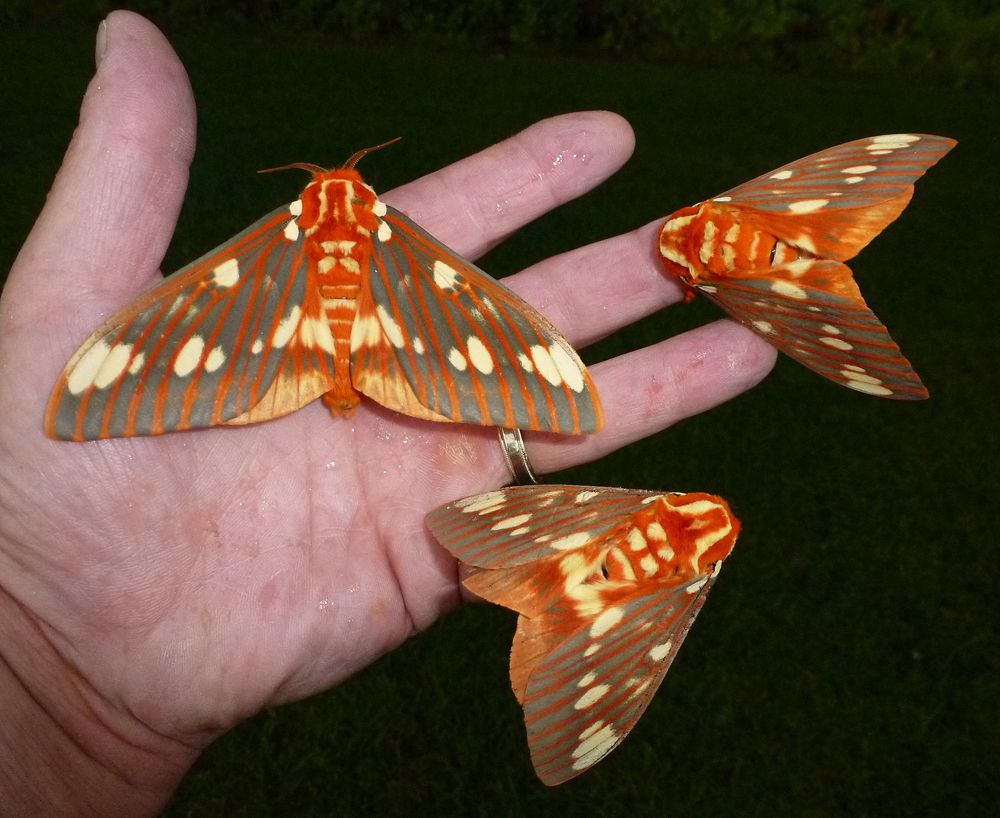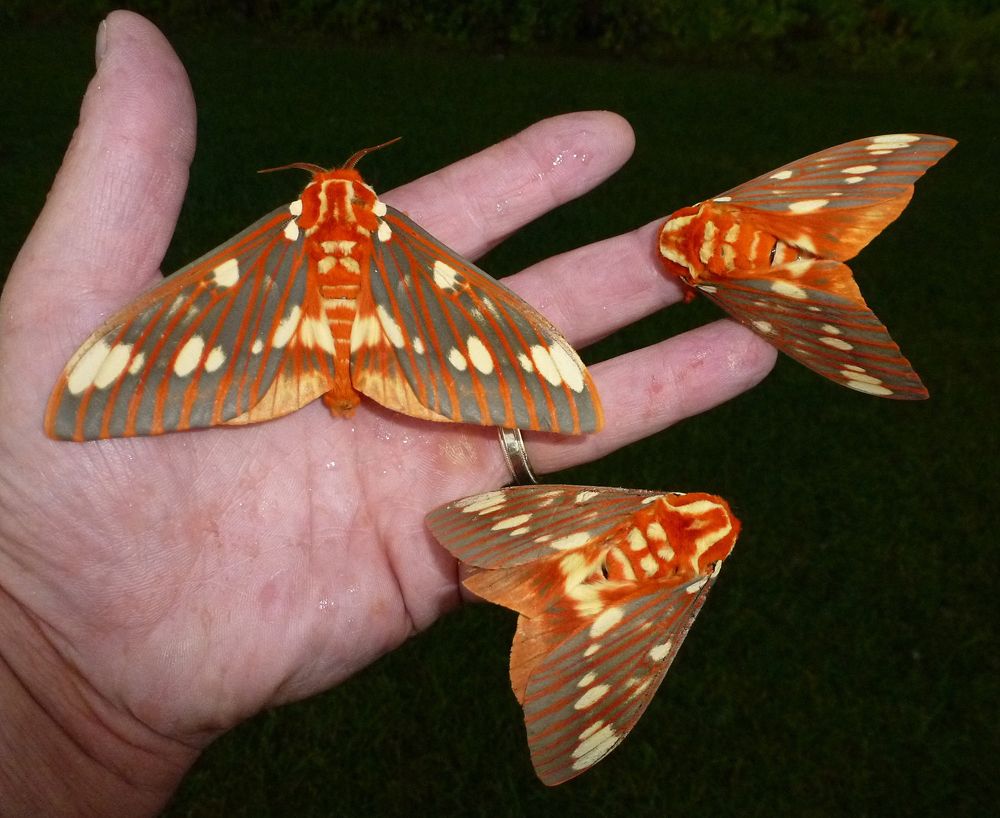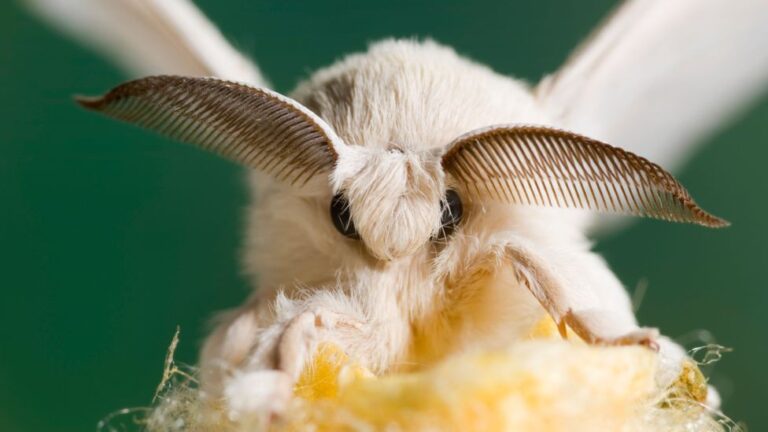Adult moths have developed several strategies to survive predation, as they are vulnerable to various predators such as birds, bats, and other insect-eating animals. Here are some of the ways in which adult moths protect themselves from predators:
- They blend into their surroundings with coloration and patterns.
- Staying still when predators are near to avoid detection.
- Agile flight patterns make them hard to catch in mid-air.
- Some mimic harmful species to deter predators.
- Releasing noxious chemicals or odors to deter attackers.
- Flashing eye-catching wing patterns to confuse predators.
- Emitting ultrasonic sounds to disrupt bat predators.
- Resting in sheltered spots during the day.
- Short adult lifespan with quick reproduction to offset predation losses.
How do moths use camouflage for survival?

Camouflage is a crucial survival strategy for adult moths. Many moth species have evolved coloration and wing patterns that closely resemble their natural surroundings, such as tree bark, leaves, or other vegetation. This adaptation is particularly effective because it makes them difficult for predators to spot.
The peppered moth (Biston betularia) is a classic example of camouflage in moths. During the Industrial Revolution, the prevalence of dark-colored moths increased in polluted areas.
Because their coloration allowed them to blend in with soot-covered trees, making them less visible to bird predators.
By mimicking their environment, moths can rest on surfaces like tree trunks during the day without drawing the attention of visually-oriented predators.
In addition, this minimizes the risk of predation when they are at their most vulnerable, especially since they are typically less active during daylight hours.
Reducing Visibility to Predators During Rest Periods
Adult moths are most vulnerable when they are at rest, as they are stationary and easy targets for predators like birds. To mitigate this vulnerability, moths often choose resting locations that provide them with additional concealment.
Moths will seek out resting spots that offer natural cover, such as crevices, under leaves, or in foliage. By selecting these locations, they further reduce their visibility to predators.
In addition to their coloration and patterns, moths may exhibit cryptic behavior when at rest. They remain motionless and may even tuck in their wings, further minimizing the chances of being detected.
What is the significance of moths’ nocturnal behavior in predator avoidance?
The majority of moth species are nocturnal, meaning they are most active at night. Several factors contribute to this behavior:
Many of the predators that feed on adult moths, such as birds, are diurnal and less active or asleep during the night. By being active at night, moths reduce their encounters with these predators, enhancing their chances of survival.
Moths have evolved specialized adaptations for nocturnal feeding, including enhanced night vision and the ability to locate flowers or other food sources in low light conditions.
Nocturnal activity allows moths to conserve energy during the day when temperatures are often higher and environmental conditions less favorable for flight.
Avoidance of Diurnal Predators
One of the primary reasons for nocturnal behavior in moths is the avoidance of diurnal predators. Moths have evolved to be most active when their predators are less active, which provides a significant advantage in terms of survival.
Moths typically rest during the day in concealed locations, reducing their exposure to birds and other daytime hunters.
Moreover, moths’ nocturnal flight patterns often involve erratic movements, making it challenging for diurnal predators to capture them in flight. This agility in the dark is a defensive strategy against avian predators.
How do moths minimize movement to avoid predators?
Cryptic behavior in moths involves remaining motionless to avoid detection by predators, especially when they are at rest during the day. This strategy is an extension of their camouflage tactics and includes several important aspects:
Moths reduce any unnecessary movement when they are resting. This minimizes the chances of attracting the attention of visual predators like birds. Even subtle movements, such as the fluttering of wings, can be enough to give away their presence.
Additionally, moths often choose resting spots that provide natural concealment, such as the undersides of leaves, crevices in tree bark, or among foliage. These locations offer an added layer of protection beyond their camouflage, making it difficult for predators to spot them.
Some moths have developed a “freeze” response when threatened. When they sense a potential predator nearby, they may freeze in place, relying on their cryptic coloration to make them appear as part of the background.
Minimizing Movement When Predators Are Nearby
Minimizing movement is not limited to resting moths. Even when moths are active, they often employ tactics to reduce their vulnerability to predators:
Moths have keen senses that can detect the presence of predators, such as bats or birds, through sound or vibrations in the air. When they sense a predator nearby, they may reduce their flight speed or altitude to avoid detection.
Moths may exhibit erratic flight patterns when they suspect a predator is in pursuit. These rapid and unpredictable movements can confuse predators and make it difficult for them to lock onto the moth for an attack.
Moths have evolved the ability to execute quick maneuvers, including sharp turns and dives, to escape from predators. Their agility in flight allows them to change direction rapidly, evading capture.
How do moths use agility in flight for evasion?
Moths have evolved to be agile fliers, and this agility plays a critical role in their evasion of predators:
Moths are capable of rapid and precise maneuvers in flight. Their ability to change direction quickly and unpredictably helps them evade pursuit by predators, particularly aerial predators like birds.
Moths can adjust their flight speed, often flying at variable speeds that are difficult for predators to match. This ability to control their speed makes it challenging for predators to capture them.
When threatened, moths can take advantage of their agility to escape by zigzagging, spiraling, or making sudden, unexpected movements that disrupt a predator’s pursuit.
Erratic Flight Patterns and Their Effectiveness
Erratic flight patterns are a specific flight strategy employed by moths to confuse and deter predators:
Erratic flight patterns can confuse and disorient predators, making it difficult for them to predict the moth’s trajectory and intercept it effectively.
By flying erratically, moths can increase the likelihood of evading capture. This behavior is particularly effective against predators that rely on precise tracking, such as bats that use echolocation.
While erratic flight can be energetically costly, it is a trade-off that moths are willing to make to escape predation. The benefit of survival outweighs the energy expenditure.
How do moths mimic harmful traits to deter predators?
Defensive mimicry in moths involves evolving physical traits or behaviors that mimic toxic or unpalatable species, deterring predators from attempting to prey on them:
Some moths have evolved coloration and wing patterns that closely resemble those of toxic or unpalatable species, such as certain butterflies. This mimicry is a form of Batesian mimicry, where a harmless species imitates a harmful one to avoid predation.
In addition to physical traits, some moths mimic the behaviors of toxic or unpalatable insects. For example, they might adopt slow, deliberate flight patterns or landing behaviors similar to those of toxic butterflies, creating the illusion of being unpalatable.
Predator Avoidance through Mimicking Harmful Traits:
Defensive mimicry in moths serves as a deterrent for predators and provides several advantages:
Predators that have had negative experiences with toxic or unpalatable species are more likely to avoid similarly colored or patterned moths in the future. This learned avoidance benefits the mimicking moths, as they are less likely to be attacked.
By mimicking harmful traits, these moths can reduce predation pressure, allowing for higher survival rates and potentially greater reproductive success.
In addition, predators may hesitate to attack a moth that exhibits mimicry, even if it is not actually toxic or unpalatable. This hesitation provides the moth with a better chance of escaping an encounter with a predator.
How do moths use chemical defense for protection?
Some moth species have evolved chemical defenses as a means of deterring predators:
Certain moths possess specialized glands that can produce noxious chemicals. These chemicals may be released as a defense mechanism when the moth is threatened. The exact compounds vary among species but can include substances that taste bad, irritate mucous membranes, or cause nausea in predators.
Moths may emit strong, unpleasant odors as a form of chemical defense. These odors can deter predators from approaching or attempting to eat them.
Deterrence of Predators through Chemical Means
Chemical defense in moths is highly effective and serves several functions:
When a predator attempts to consume a moth that releases noxious chemicals, it often experiences discomfort or negative side effects. This aversion teaches the predator to avoid hunting similar-looking moths in the future.
Furthermore, the release of chemicals or strong odors can act as an alarm signal, alerting nearby moths to the presence of a predator. This communication helps other moths avoid the same threat.
Some chemicals produced by moths can interfere with the digestion of predators, making the moth an unappetizing or harmful meal. This can deter predators from consuming moths with chemical defenses.
How do moths use startle patterns to confuse predators?
Certain moths have evolved eye-catching wing patterns, often resembling eyespots or false eyes, which can startle or intimidate predators:
These moths have developed wing patterns that resemble the eyes of larger animals or predators, such as owls or snakes. These false eyes can confuse or deter smaller predators that might otherwise attack them.
In some cases, moths may have wing patterns that mimic the appearance of potential predators. This can create a “predator-prey” illusion, making other animals think they are confronting a larger, more dangerous creature.
Flashing These Patterns to Confuse and Startle Predators
The effectiveness of startle patterns lies in their ability to create confusion and hesitation in predators:
When moths sense a predator nearby, they may suddenly expose their eye-catching wing patterns, such as by spreading their wings. This rapid and unexpected movement can startle potential attackers.
Furthermore, the sudden appearance of eye-like markings or startling patterns can momentarily interrupt a predator’s approach, buying the moth valuable seconds to escape or deploy other defensive strategies.
How do moths produce ultrasonic sounds to disrupt bat predators?

Some moths have evolved the ability to produce ultrasonic sounds as a defense mechanism against bat predators:
Certain moths possess specialized structures, known as tymbals or stridulatory organs, which they use to produce ultrasonic sounds. These sounds are often emitted in response to the echolocation calls of hunting bats.
Furthermore, the ultrasonic sounds produced by moths may mimic the frequency and timing of bat echolocation calls. This mimicry can disrupt the bat’s ability to accurately locate and capture the moth in flight.
Disruption of Bat Predators’ Echolocation
The production of ultrasonic sounds by moths is a defensive strategy that can have several key effects:
Bats rely on echolocation to locate prey in complete darkness. When moths emit ultrasonic sounds, it can interfere with a bat’s ability to process the returning echoes, making it more difficult for the bat to pinpoint the moth’s location.
By emitting ultrasonic sounds that resemble the echolocation calls of potential prey, moths can confuse bats and potentially escape their pursuit. This gives moths a chance to evade capture.
Furthermore, moths with effective ultrasonic sound production may have a selective advantage in areas with high bat predation. Over time, this adaptation can lead to the survival of moths with better sound-producing abilities.
How do moths hide during daylight to avoid diurnal predators?
To avoid diurnal predators, moths employ various strategies to hide during daylight hours:
Moths often seek shelter in dense foliage, such as bushes and trees, where they can rest undisturbed. The complexity of vegetation provides concealment from visually-oriented predators.
In addition, moths select resting spots that match their camouflaged appearance. For example, a moth with bark-like coloration might rest on tree bark, making it nearly invisible to predators.
Some moths find refuge in natural crevices, such as the gaps in tree bark or rock formations. These hidden locations provide protection from predators.
Reducing Exposure to Diurnal Predators
Hiding during daylight serves multiple purposes and helps moths:
Diurnal predators like birds are active during the day when moths are most vulnerable. By hiding in sheltered spots, moths reduce their exposure to these predators and increase their chances of survival.
Resting during the day allows moths to conserve energy, as they are generally less active during daylight hours. This energy conservation can be crucial for their nighttime activities, such as feeding and reproduction.
Daytime hiding helps moths maintain the effectiveness of their camouflage. Moths that remain concealed are less likely to suffer damage to their wings or coloration, which could compromise their ability to blend into their environment.
FAQ’s
Why would dark moths have an advantage?
Dark moths can have an advantage in polluted areas because their coloration helps them blend in with soot-covered trees, making them less visible to predators.
How do white peppered moths camouflage?
White peppered moths use their light coloration to blend in with the light-colored bark of trees, making them less conspicuous to predators.
Why do dark moths have a lower chance of survival?
Dark moths in unpolluted environments may have a lower chance of survival because their coloration stands out against light-colored backgrounds, making them more visible to predators like birds.
Do dark-colored moths have a higher survival rate?
Dark-colored moths may have a higher survival rate in polluted areas where their coloration provides camouflage, but in unpolluted environments, they might have a lower survival rate due to increased visibility.
Why do dark moths live longer?
Dark moths do not necessarily live longer. Their lifespan is influenced by factors such as predation pressure, reproductive strategies, and environmental conditions.
What are the adaptations of a moth?
Moths have various adaptations, including camouflage, nocturnal behavior, cryptic behavior, agile flight, mimicry, chemical defense, sound production, hiding during daylight, and rapid reproduction.
Why do dark-colored moths have a disadvantage?
Dark-colored moths can have a disadvantage in unpolluted environments because their coloration makes them more visible to diurnal predators, increasing their risk of predation.
Final Words
In summary, adult moths use many clever tricks to stay safe from animals that want to eat them in their different environments. They can hide by pretending to look like the things around them or by coming out at night when their enemies are asleep.
They also know when to keep really still or fly quickly in unpredictable ways to confuse animals that want to catch them. Moths can even copy the look or smell of animals that are dangerous to eat, which makes other animals think twice about trying to snack on them.
Some moths can even make special high-pitched sounds to mess up bats’ special way of finding food. During the daytime, moths find good hiding spots to stay away from animals that are awake in the day.
Lastly, moths have babies quickly and don’t live very long as adults, which helps them make sure there are enough of them around, even if some get eaten. These are all the cool ways moths have figured out to stay alive when they have so many hungry enemies around them.

